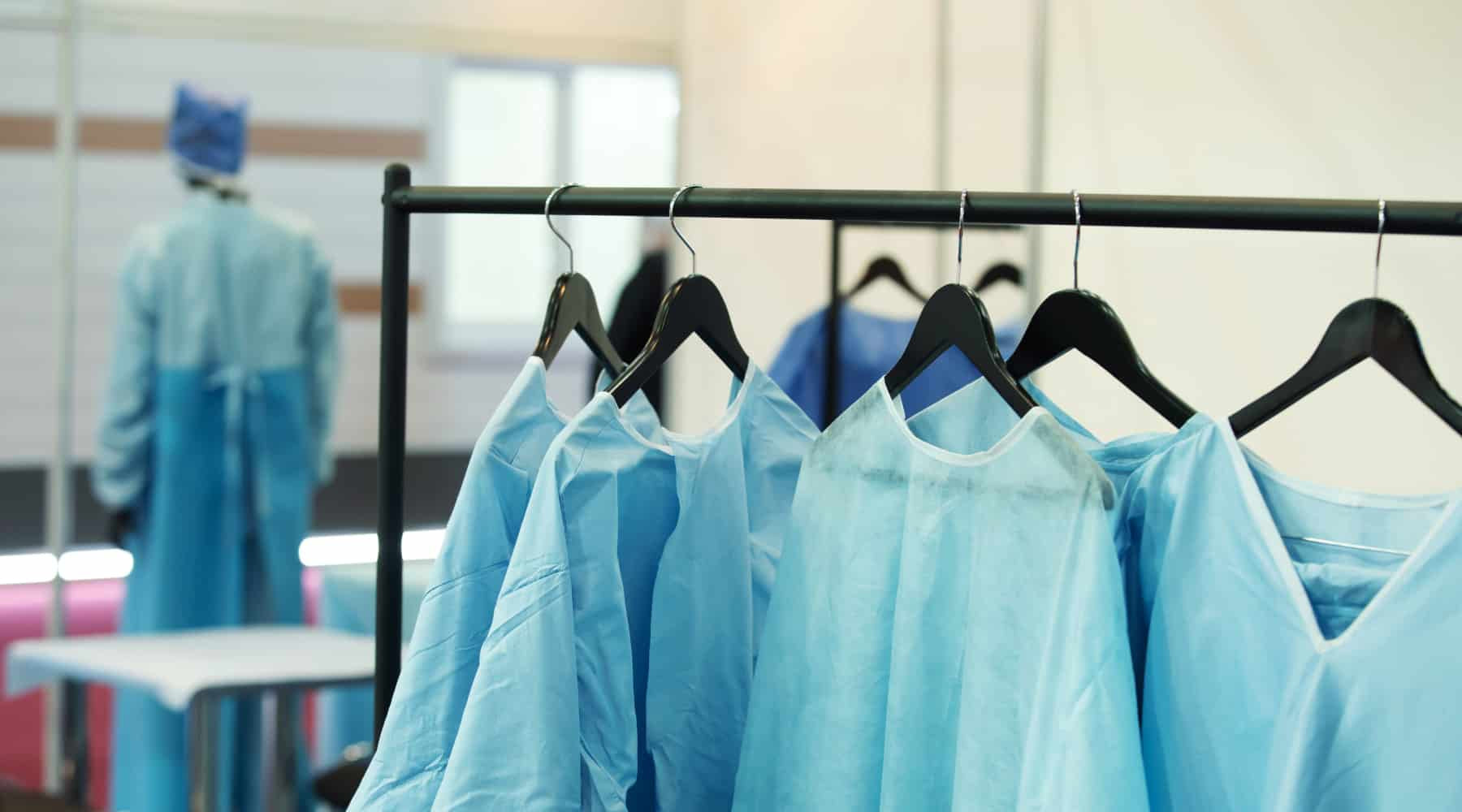What's New at Wazoodle
What's New

In the past few weeks (March/April 2020) several people have inquired about or purchased fabrics to make gowns for use in hospitals and healthcare settings due to the extreme shortage of gowns.
*Disclaimer: The article below is based solely on the opinion and knowledge of the author and interpretation of the published regulations. None of the statements below are based on any experience or expertise in making medical gowns. The tests quoted were performed by an independent lab. The objective of this article to provide some information on medical gowns and fabric suggestions to the best of our knowledge, it is not to be perceived as professional advice.
The FDA has published standards for medical gowns here. There are four levels of gowns, starting with:
The American Society for Testing and Materials (ASTM) F2407 is an umbrella document which describes testing for surgical gowns: tear resistance, seam strength, lint generation, evaporative resistance, and water vapor transmission.
ANSI/AAMI PB70:2003 describes liquid barrier performance and classification of protective apparel and drapes intended for use in health care facilities.
Our statement of caution: Considering that some carriers of the virus may be asymptomatic – they do not exhibit the tell tale symptoms – but could spread infection, the information below refers to gowns made using medical grade Level 4 material that provides a high level of barrier protection.
The benefits of using Level 4 fabric:
Medical grade ProSoft MediPUL® made by AKAS Textiles will meet the standard for liquid barrier performance for Level 4 gowns. It is a non-linting, breathable, barrier fabric manufactured in USA. Refer to product specifications. It has been tested for the following and passed:
RESISTANCE OF MATERIALS IN PROTECTIVE CLOTHING TO PENETRATION BY SYNTHETIC BLOOD (ASTM F 1670-B): Result Pass
VIRAL PENETRATION, RESISTANCE OF MATERIALS USED IN PROTECTIVE CLOTHING TO PENETRATION BY BLOODBORNE PATHOGENS (ASTM F1671), PROCEDURE B: Result Pass
Note to gown makers: We have new Cuff Material available now - ProCool MediPlus® Cuff Material - It has been developed to use with the gowns.
Use a ball point needle on your machine – no sharp needles. The seams of the gown must meet ASTM D751 if you need to get FDA approval for your gowns. I believe this can be accomplished by using a Seam Sealing Tape or Seam Sealing Tape HD on the seams or by double seaming. Making the entire gown using ProSoft MediPUL® addresses all the critical areas and makes them equivalent to isolation gowns. For the cuffs use a ribbed fabric, also called rib knit fabric or a StretchFit fabric that has at least 10% lycra.
The cuff, hems, and bindings, are excluded from some of the requirements.
Find downloadable patterns for gowns, masks and other PPEs at www.autometrix.com/ppe
*Disclaimer: The article is based solely on the opinion and knowledge of the author and interpretation of the published regulations. None of the statements are based on any experience or expertise in making medical gowns. The tests quoted were performed by an independent lab. The objective of this article to provide some information on medical gowns and fabric suggestions to the best of our knowledge, it is not to be perceived as professional advice.
Compiled by Archana Sharma of Wazoodle Fabrics. In case there are inadvertent mistakes in the document, please refer to the CDC and FDA.gov site for the most up-to-date information on PPEs.